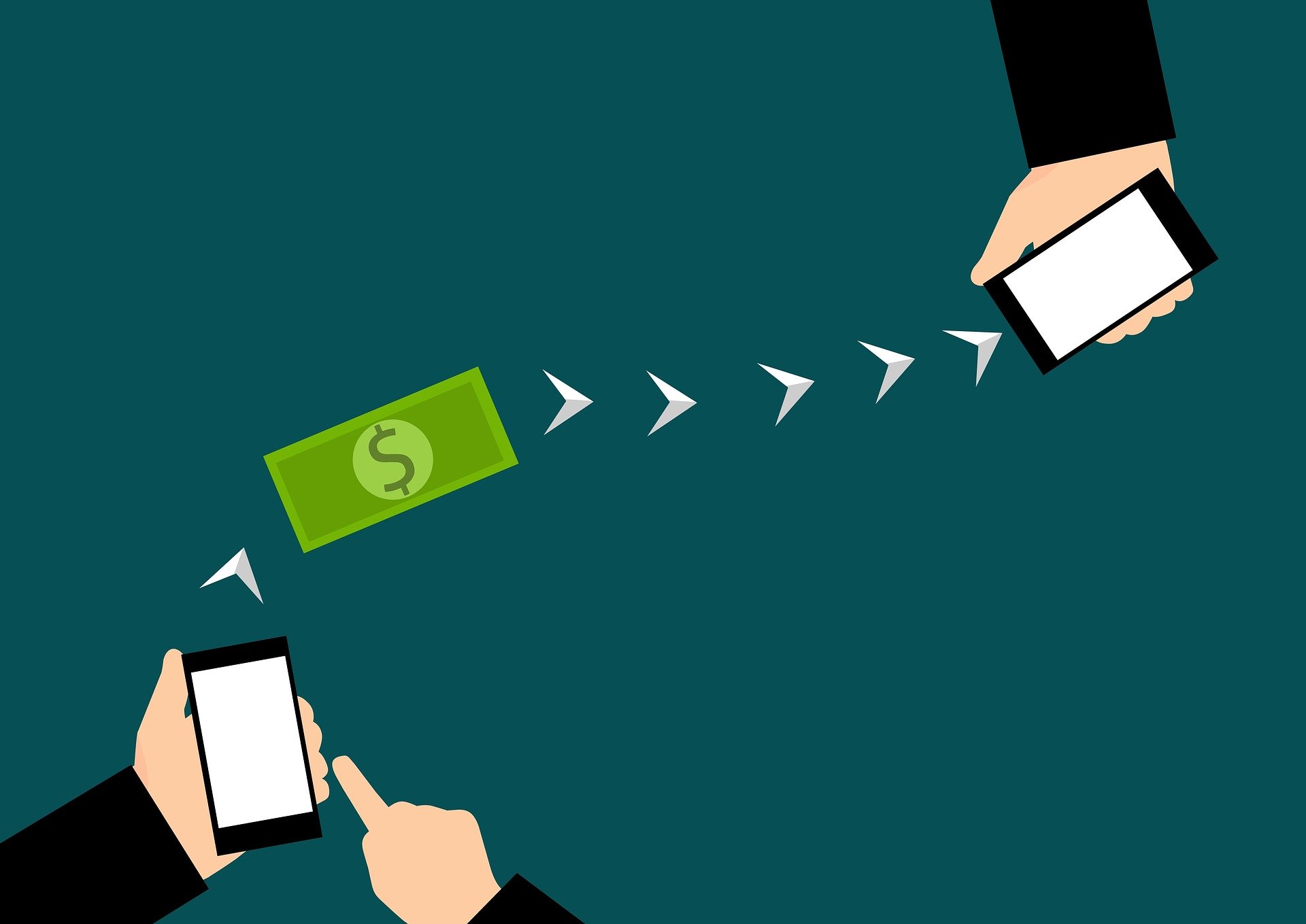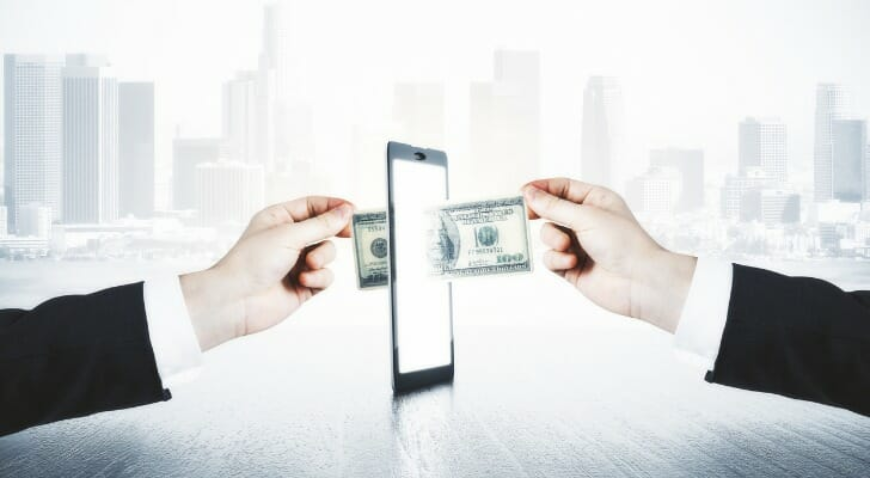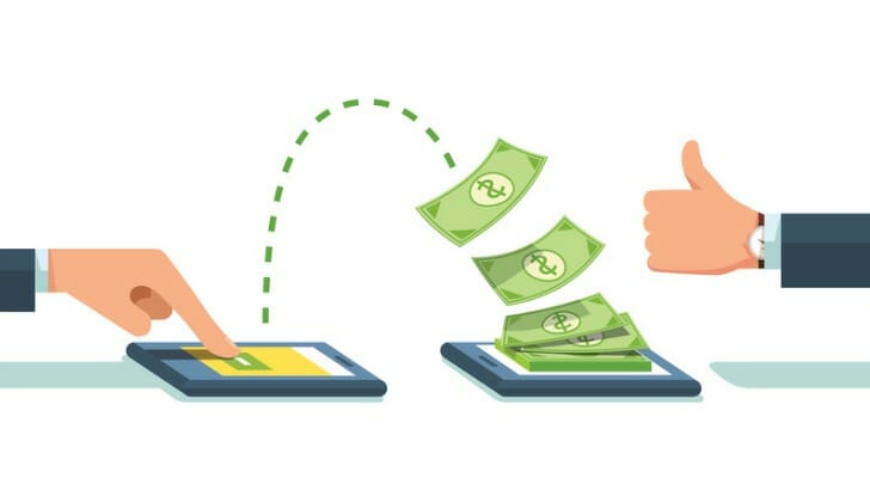How To Send Money To Someone Without A Bank Account?
Discover accessible ways on how to send money to someone without a bank account. Explore digital wallets, prepaid cards, and innovative solutions for seamless financial transactions.
Author:Camilo WoodReviewer:Emmanuella SheaJan 08, 20241.3K Shares88.4K Views

Sending money to someone without a bank account requires exploring alternative methods and financial services designed to facilitate transactions for individuals who may not have traditional banking access.
So, how to send money to someone without a bank account? In many cases, this can involve leveraging digital payment platforms, cash-based services, or other innovative solutions.
Although many people don't have bank accounts, you might think about simply sending money to the recipient by transferring dollars to their bank account. Indeed, over 9 million Americans fit that description, according to a recent FDICpoll.
The good news is that even without a bank account, you have several possibilities for money transfers. We'll go over some of the most affordable, quick, and simple ways to send money to someone who doesn't have a bank account.
If you're seeking strategies to increase your liquidity so you can send money to others more quickly and conveniently, you might want to consult with a financial counselor. They can also assist you with your entire financial situation.
In this detailed exploration, we'll delve into various options on how to send money to someone without a bank account.
Digital Wallets And Mobile Money
In the evolving landscape of financial technology, digital wallets, and mobile money have emerged as dynamic alternatives, offering solutions for individuals seeking to send money without relying on traditional bank accounts. These technologies harness the power of mobile phones, providing users with a virtual platform to manage and transfer funds seamlessly.
Digital Wallets
Digital wallets, synonymous with convenience and accessibility, have become a cornerstone of modern financial transactions. These virtual wallets, often accessible through smartphone applications, allow users to store funds, make payments, and transfer money with just a few taps on their devices.
Digital wallet providers such as PayPal, Cash App, and Venmo have transformed the way individuals handle finances, providing an avenue for sending money without the necessity of a bank account.
Digital wallets operate by linking to a user's bank account or by allowing direct fund storage within the wallet. Once connected, users can initiate money transfers to others, leveraging the recipient's phone number or email address. The funds are seamlessly deposited into the recipient's digital wallet, providing a quick and efficient means of financial exchange.
The accessibility of digital wallets extends beyond traditional banking, catering to individuals who may not have access to or prefer not to use conventional banking services. This inclusivity has made digital wallets a valuable tool for sending money to those without a bank account, fostering financial independence and flexibility.
Particularly since the pandemic, digital wallets have become incredibly popular, accounting for over 25% of point-of-sale expenditure in 2020. The ease of transferring money without a bank account increases with the number of users in a digital wallet.
An average of 32% of mobile wallet users utilize three or more digital wallets. This is significant because, although having options is beneficial, using an unbanked wallet necessitates having other users on the same platform. You can typically only transfer money within the same digital wallet if you don't have an account. That doesn't, however, prevent you from getting money.
Mobile Money
Mobile money, a subset of digital financial services, takes the concept of digital wallets a step further. It operates as a virtual account linked to the user's mobile phone number, allowing individuals to perform various financial transactions without the need for a traditional bank account.
Across different regions, mobile money services have gained popularity as a means to send money, pay bills, and conduct everyday transactions. Mobile money providers collaborate with local telecommunication networks, creating an extensive network of agents where users can deposit or withdraw cash.
Mobile money services often offer innovative features such as airtime top-ups, bill payments, and even savings accounts accessible through the mobile phone. These services cater to the unbanked population, providing a secure and convenient platform for managing financial transactions without relying on traditional banking infrastructure.
Prepaid Debit Cards
Prepaid debit cards represent a tangible and versatile solution for sending money to someone without a bank account. These cards, preloaded with funds, function similarly to traditional debit cards but without the need for a linked bank account. They provide a tangible financial tool that empowers individuals to make transactions and withdrawals with ease.
Users can load funds onto prepaid debit cards through various means, including direct deposit, cash deposits at participating locations, or online transfers. Once loaded, the cardholder gains immediate access to the funds, enabling them to make purchases, withdraw cash from ATMs, and transfer money to others.
Prepaid debit cards offer transaction flexibility, allowing users to make purchases both online and in physical stores. Additionally, these cards are widely accepted at ATMs, facilitating cash withdrawals and providing a comprehensive financial tool for individuals without traditional banking access.
Cash Transfer Services
Cash transfer services, exemplified by global entities like Western Union and MoneyGram, play a pivotal role in facilitating financial transactions for individuals without a bank account. These services operate through vast networks of physical locations, enabling individuals to send and receive cash securely.
Cash transfer services provide a dual-channel approach, allowing users to initiate transactions both online and in person. Online transactions often involve the sender initiating the transfer through a digital platform, while in-person transactions can be conducted at agent locations.
Recipients, often in distant locations, can access the sent funds by visiting a designated agent location. Verification processes ensure the secure release of funds, making it a reliable option for individuals without access to traditional banking infrastructure.
Cryptocurrency Transfers
Cryptocurrency transfers have emerged as a transformative solution for sending money to individuals without a traditional bank account. Decentralized and borderless, cryptocurrencies like Bitcoin provide an alternative financial infrastructure, offering new avenues for secure and efficient cross-border transactions.
Cryptocurrency transfers function on a peer-to-peer (P2P) basis, meaning individuals can send funds directly to recipients without the involvement of banks or other financial institutions. This direct transfer capability simplifies the process of sending money, making it particularly attractive for those without traditional banking access.
To engage in cryptocurrency transfers, users need a digital wallet. These wallets, accessible through various platforms and applications, store the user's cryptocurrency holdings and facilitate transactions. Both the sender and the recipient require compatible wallets for seamless fund transfers.
P2P Payment Apps
Peer-to-peer (P2P) payment apps have become integral to the modern financial landscape, providing users with user-friendly platforms to send money without the need for traditional bank accounts. These apps leverage technology to simplify transactions, making financial exchanges quick, convenient, and accessible.
P2P payment apps, such as Zelle, Venmo, and Cash App, prioritize user-friendly interfaces. Users can link their accounts to the app, facilitating easy money transfers using phone numbers, email addresses, or other identifiers. The intuitive design of these apps caters to individuals seeking uncomplicated financial solutions.
One of the key advantages of P2P payment apps is the immediacy of transactions. Users can send and receive money almost instantly, providing a swift and convenient alternative to traditional banking channels. This real-time functionality addresses the urgency often associated with financial transactions.
P2P payment apps allow users to link various funding sources, including bank accounts, debit cards, and credit cards. This flexibility accommodates users with different financial preferences and enables them to choose the most suitable source for transactions.
Government Assistance Programs
Government assistance programs play a crucial role in providing financial aid directly to individuals, including those without a traditional bank account. These programs utilize various methods, such as prepaid debit cards, paper checks, or other means, to distribute funds to those in need.
Some government assistance programs distribute funds through prepaid debit cards. These cards can be loaded with the allocated amount, offering recipients a tangible financial tool to access funds, make purchases, and withdraw cash.
Traditional paper checks remain a viable method for distributing financial aid. Recipients can cash or deposit these checks with alternative financial service providers if they don't have a conventional bank account.
Innovative government assistance programs leverage digital platforms to distribute funds. This may involve the use of digital wallets or mobile money services, enabling recipients to access financial aid through their mobile devices.
Check Or Money Order
Sending money without a bank account often involves relying on traditional methods like checks or money orders. While these methods may seem dated in the digital age, they continue to offer reliability and accessibility, particularly for individuals without access to modern banking infrastructure.
Check
A check is a written order from an account holder instructing their bank to pay a specific amount to the recipient. To send money using a check, the sender writes the recipient's name, and the amount, and signs the check. The recipient can then cash the check or deposit it into their account.
Money Order
Money orders are prepaid instruments issued by financial institutions or other entities. To send money via a money order, the sender purchases the instrument for the desired amount and specifies the recipient. The recipient can then cash the money order at a bank or another financial institution.
Marguerita Cheng, CFP professional, RICP, and CEO of Blue Ocean Global Wealth, advises against sending cash via mail at all. Cheng points out that you can obtain a money order if you're searching for a more conventional method of delivering money.
You can buy money orders from a retailer or financial institution. Typically, there is a $1,000 purchasing cap and a $5 small fee.
Retail And Grocery Stores
Retail and grocery stores are increasingly becoming hubs for financial services, providing individuals without bank accounts with convenient options for sending and receiving money. This approach leverages the extensive networks of these establishments to bridge the gap in financial accessibility.
Many retail and grocery stores partner with financial service providers to offer money transfer services. Individuals can visit these stores to send money to recipients locally or internationally. The sender initiates the transfer, and the recipient can pick up the funds at a designated location.
Retail and grocery stores often provide check cashing services, allowing individuals to cash checks without the need for a bank account. This service can be particularly beneficial for those who receive payments in the form of checks.
Some retail and grocery stores offer prepaid debit cards that users can load with funds. These cards function similarly to traditional debit cards, providing a means for making purchases, withdrawing cash, and transferring funds.
Nonprofit And Aid Organizations
Nonprofit and aid organizations play a unique role in providing financial assistance directly to individuals in need. While their primary focus may be humanitarian, the financial aid they offer can be crucial for those without access to traditional banking services.
Nonprofit organizations often provide direct financial assistance to individuals facing economic hardships. This can include funds for essential needs such as housing, food, and medical expenses.
To enhance the efficiency of financial aid distribution, some nonprofit organizations use prepaid debit cards or vouchers. These instruments allow recipients to access funds for specific purposes, ensuring the aid reaches its intended target.
Nonprofits may collaborate with financial institutions to facilitate the distribution of funds. This collaboration ensures that recipients can access financial services even if they don't have a traditional bank account.
FAQs
What Are Some Digital Wallet Options For Sending Money To Someone Without A Bank Account?
Digital wallets like PayPal, Cash App, and Venmo allow users to send money without involving a traditional bank account. The recipient can receive funds directly into their digital wallet.
How Do Cash Transfer Services Work For Sending Money To Individuals Without A Bank Account?
Companies like Western Union and MoneyGram operate global networks for sending and receiving cash. The sender initiates the transfer online or at a local agent, and the recipient can collect the funds in person.
Is It Possible To Send Money Using Cryptocurrency To Someone Without A Bank Account?
Yes, cryptocurrencies like Bitcoin can be used for peer-to-peer transactions. The sender transfers funds directly to the recipient's cryptocurrency wallet, bypassing the need for a bank account.
Can P2P Payment Apps Be Used For Sending Money Without A Bank Account?
Yes, P2P payment apps like Zelle, Google Pay, and Apple Pay enable individuals to send money using only a smartphone, without the need for a traditional bank account.
What Considerations Should I Keep In Mind When Sending Money To Someone Without A Bank Account?
Consider factors such as transaction fees, exchange rates (for international transfers), security measures of the chosen service, and the accessibility of the method for the recipient.
How To Receive Money Without A Bank Account On Cash App?
Open the Cash App, select the "Activity" tab, locate the pending payment, and click "Accept" next to the sender's name to receive without a bank account.
Conclusion
How to send money to someone without a bank account? In the modern financial landscape, several alternatives exist for sending money to someone without a bank account. The choice of method depends on factors such as the sender's preferences, the recipient's accessibility to financial services, and the urgency of the transfer.
As technology continues to advance, the options for inclusive financial transactions are expected to expand, providing more accessible solutions for individuals without traditional banking access.

Camilo Wood
Author

Emmanuella Shea
Reviewer
Latest Articles
Popular Articles

